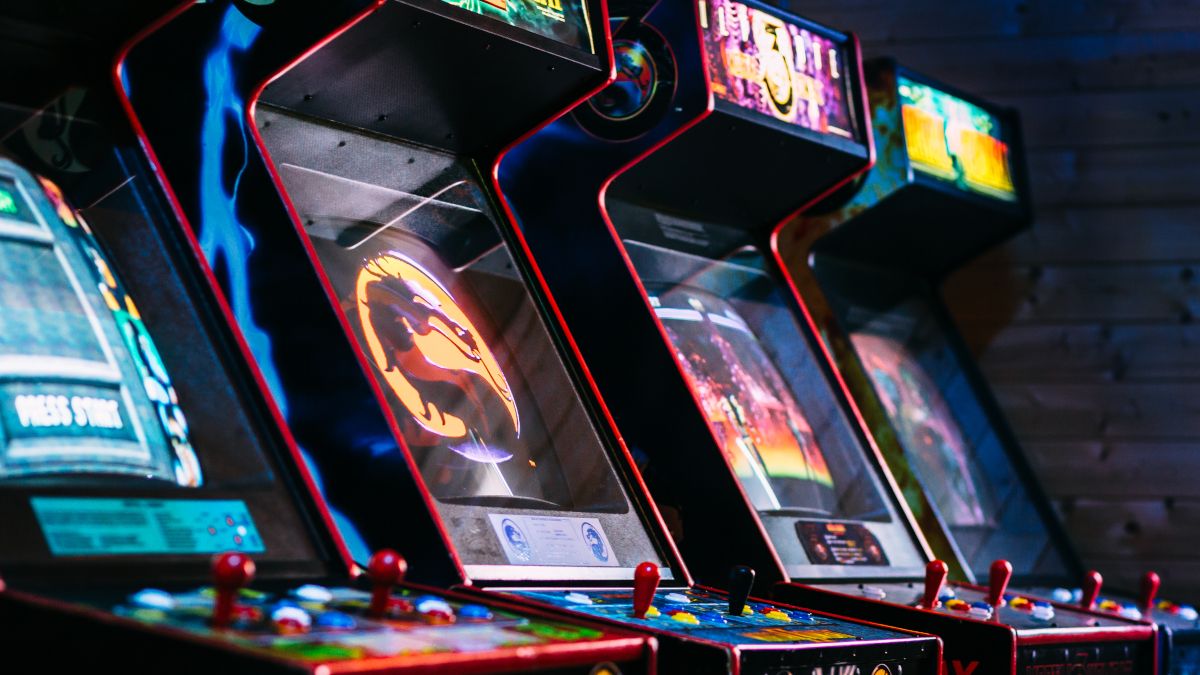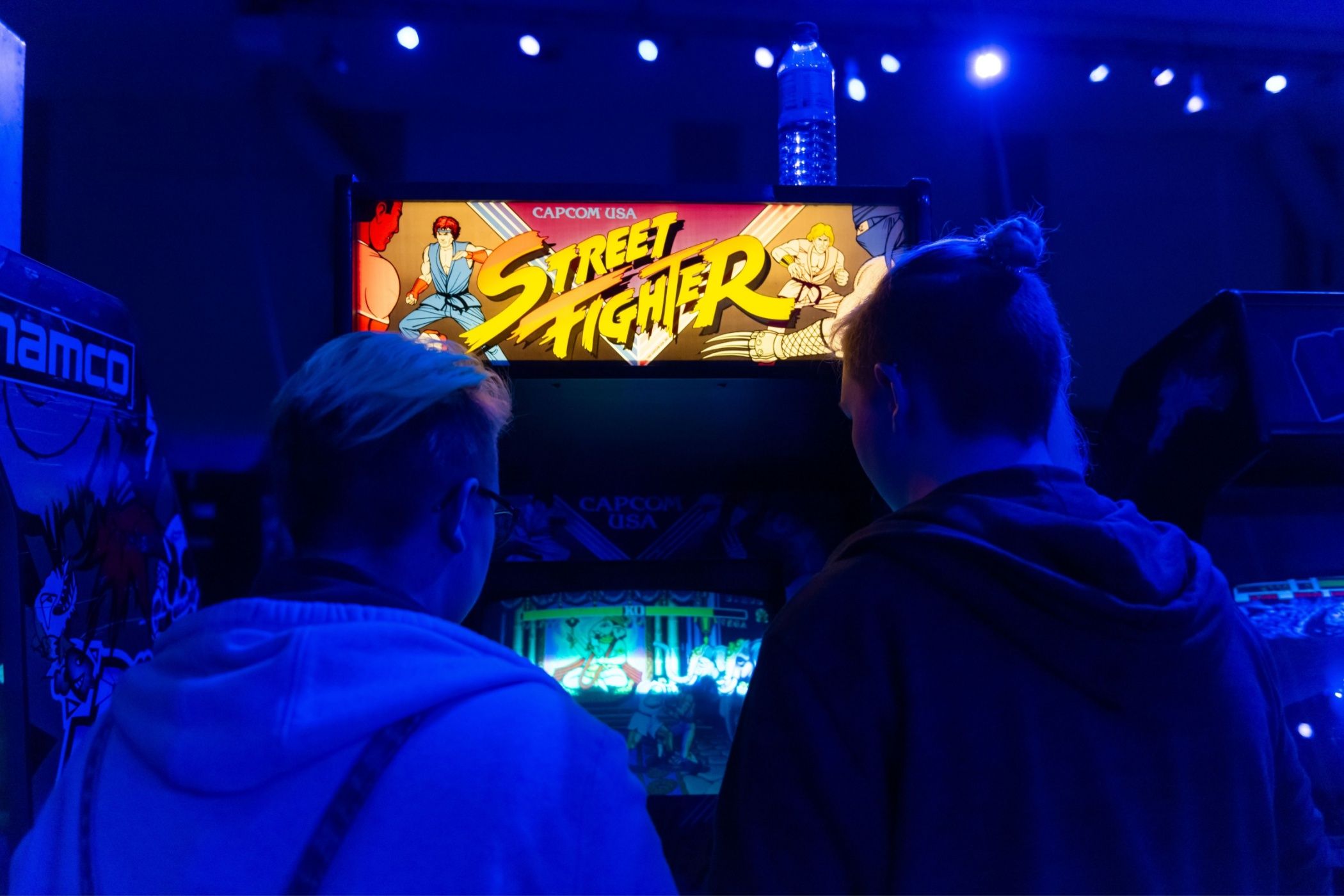Key Takeaways
- Arcade games may look different due to the introduction of gameplay changes and new features in later editions.
- Some retro arcade games have been altered through new system boards, while others received multiple updated re-releases.
- Unofficial arcade cabinets, like
Street Fighter II: Rainbow Edition
, offered unique and often bizarre variations of classic games.
Sometimes, the arcade games you used to love feel different when you revisit them. While there’s always a chance that you’re viewing an old game through rose-tinted lenses, that’s not always the case with arcade releases. Sometimes, the game really was different.
Just Like You Remember (But Not Really)
If you’ve ever tried to revisit your favorite arcade games through home ports or at a local arcade, you may have noticed some significant differences between what you’re playing and the game you remember. I’m not talking about minor technical discrepancies likeinput delay or a higher screen resolution. Instead, you might discover that major gameplay features have been altered or are outright missing.
There are a few reasons that retro arcade games receive these changes, but most of them are the result of the convoluted release history behind many gaming classics. Before downloadable content and post-launch patches became standard practice for video games—including modern arcade cabinets—arcade manufacturers used a variety of methods to update their most popular titles.
These changes brought numerous improvements and new features to arcade cabinets, but they also unintentionally inspired years of confusion. It wasn’t always clear when you were playing the original or updated version of an arcade game, and it was even harder to tell what had changed in each version.
This confusion was only worsened by the fact that the original, unaltered arcade cabinets were still readily available in many venues, meaning players could have different experiences with the same game depending on the cabinet they used.
For example, I was introduced to Galaga through the “Class of 1981” arcade cabinet, which included a unique “fast fire” option for the game. As the name implies, “fast fire” allows you to fire as fast as you can mash the shoot button. However, I only realized that this wasn’t how Galaga normally played until I tried multiple home ports and other arcade cabinets. This discovery may have invalidated all my years of claiming to be good at Galaga, but at least I know why I’m suddenly terrible at the game.
These alternative versions of classic arcade games aren’t always clearly labeled and are sometimes different in much subtler ways. If your favorite arcade game seems to play differently now, it may be the result of one of these practices.
New Parts, New Problems
Some arcade games can be altered by simply replacing the system board. Different system boards for the same game may feature additional dip switches, which add more gameplay settings including difficulty options or extra scoring bonuses. Some arcade boards add whole new features to a game.
To use Galaga as an example once again, the original arcade release received an official replacement arcade board shortly after its launch. This newer board added a “rapid fire” feature to the game, allowing players to automatically shoot by holding down the fire button, though you can still mash away if you prefer the original playstyle. For players who discovered the game through these modified cabinets, this simple feature became a defining part of Galaga, leaving many confused when rapid fire wasn’t included in most other versions.
It can be difficult to discern when an arcade cabinet has been modified if you lack prior knowledge of the game. However, having a few extra dip switches won’t drastically alter a game. Even if you discovered your favorite arcade games through a modified cabinet, the differences between it and the original release should be minimal.
Updating Games the Old-Fashioned Way
Many arcade games received multiple updated re-releases after their initial launch. Arcade titles like Space Invaders Deluxe and Ms. Pac-Man are improved versions of their predecessors, adding new features and minor tweaks to the original experience.
Although these updated editions are given separate names and arcade cabinets to distinguish them from the original release, their similarities make them easy to mix up. For example, Ms. Pac-Man is often assumed to be a reskinned version of its predecessor, but it makes numerous changes to the level design and enemy AI that are often misattributed to the original game.
This confusion is further exacerbated by games that received multiple updated releases. Retro fighting games frequently utilized updated releases to add more playable characters, introduce new mechanics, and make balance adjustments.
Street Fighter II is one of the most notable examples of this practice, having received three updated versions between 1992 and 1994. Although each new release introduced significant changes to the game, even the most hardcore fighting game fans have trouble keeping up with all the subtle differences that define each edition.
Unlike part swaps, it’s easy to tell the different arcade game editions apart based on their gameplay mechanics and the design of their cabinets. Even with these indicators, it’s still common for many players—myself included—to misremember the version they played, especially when it’s for a game you’ve never heard of.
Even Bootlegs Can Be Unforgettable
Unofficial arcade cabinets are rarely seen nowadays, but many were in circulation during the peak of the arcade boom and can still be found around the world. Usually, it’s easy to tell an authentic cabinet apart from a cheap knockoff, but some imitators are more convincing than others. While some unofficial cabinets include popular games without any notable alterations, others include bizarre reimaginings of arcade classics.
The sheer abundance of different versions of Street Fighter II made it easy for cheap knockoffs to sneak into arcades. One of the most infamous examples is Street Fighter II’: Rainbow Edition: a hacked version of Street Fighter II: Champion Edition that features faster gameplay, numerous questionable balance changes, and an absurd number of glitches.
Some notable additions from Rainbow Edition include projectile attacks homing in on opponents, the ability to spam special attacks in midair, and a button to switch to another character during a match.
Rainbow Edition is a far cry from the authentic Street Fighter II experience, yet it fooled enough people to appear in numerous arcades around the globe and garner a lasting reputation. The game is even credited with inspiring Capcom to develop Street Fighter II Turbo: Hyper Fighting, the second official updated edition of Street Fighter II.
If you were lucky enough to play Rainbow Edition when it first released in the early 90s, you likely had a radically different impression of Street Fighter II than most other players.
Endless Options for Revisiting Arcade Classics
Although you might not have started out with the original versions of your favorite arcade games, you can still enjoy these titles on most modern platforms. Even if you’re more familiar with the later editions, you’ll find that the originals offer the same core experience, albeit with some minor differences.
But other versions of these games are also available in arcades, home ports like the Street Fighter 30th Anniversary Collection, and re-releases like Arcade1Up’s “Deluxe” edition of the Class of ’81 cabinet. As such, there are plenty of ways to revisit any version of your favorite arcade classics (yes, even Rainbow Edition).






